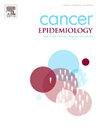Time to non-small cell lung cancer treatment and impact on survival in West Virginia
IF 2.3
3区 医学
Q3 ONCOLOGY
引用次数: 0
Abstract
Purpose
To determine the time to treatment for patients with non-small cell lung cancer (NSCLC) in West Virginia (WV) by baseline characteristics and the association of timely treatment with survival.
Methods
A retrospective study was conducted using 1993–2021 WV Cancer Registry data to identify persons diagnosed with NSCLC who received treatment. Time to treatment from diagnosis was determined and dichotomized as early treatment (<35 days) vs delayed treatment (≥35 days). Descriptive statistics, comparative and survival analyses (with univariate and multivariate Cox regression were used to address study objectives.
Results
Of 10,463 participants, the majority were male (58.1 %), married or partnered (59.9 %), non-Hispanic white (97.5 %). 61 % received early treatment. 45 %, 38 %, and 16 % received systemic therapy, surgery, and radiation, respectively.
Baseline characteristics significantly associated with treatment receipt included being male (HR=1.08, 95 % CI=1.04–1.13), cancer stage (HR range=1.19–2.38, being Black and receiving surgery (0.43, 0.30–0.62), radiation (0.48, 0.33–0.68), or systemic therapy (0.33,0.23–0.47) (compared to other treatment). Baseline characteristics significantly associated with death include rurality (HR=1.09, 95 % CI=1.00–1.18), age (HR=1.01, 1.01–1.02), male gender (HR=1.21 (1.16–1.26), being married (0.92, 0.88–0.96), comorbidity (1.07, 1.05–1.09), cancer stage (HR range=1.58–4.79), and receiving surgery (0.16, 0.11–0.22), radiation (0.34, 0.24–0.49), or systemic therapy (0.17, 0.12–0.24) (compared to other treatment).
Conclusion
In WV, most patients with NSCLC who receive treatment are treated early. Sociodemographic and clinical factors such as being male, cancer stage and type of treatment predicted time to treatment receipt and were likewise associated with overall survival. Cancer stage represents a modifiable factor that may be responsive to interventions aimed at improving lung cancer outcomes through early diagnosis.
西弗吉尼亚州非小细胞肺癌治疗时间及对生存率的影响
目的探讨西弗吉尼亚州非小细胞肺癌(NSCLC)患者的基线特征及及时治疗与生存期的关系,以确定患者的治疗时间。方法采用1993-2021年WV癌症登记处的数据进行回顾性研究,以确定诊断为非小细胞肺癌并接受治疗的患者。确定从诊断到治疗的时间,并将其分为早期治疗(35天)和延迟治疗(≥35天)。采用描述性统计、比较和生存分析(单因素和多因素Cox回归)来确定研究目标。结果在10463名参与者中,大多数是男性(58.1% %),已婚或有伴侣(59.9% %),非西班牙裔白人(97.5% %)。61 %接受早期治疗。45 %、38 %和16 %分别接受了全身治疗、手术和放疗。与接受治疗显著相关的基线特征包括男性(HR=1.08, 95 % CI= 1.04-1.13)、癌症分期(HR范围= 1.19-2.38)、黑色皮肤和接受手术(0.43,0.30-0.62)、放疗(0.48,0.33 - 0.68)或全身治疗(0.33,0.23-0.47)(与其他治疗相比)。与死亡显著相关的基线特征包括农村性(HR=1.09, 95 % CI= 1.00-1.18)、年龄(HR=1.01, 1.01 - 1.02)、男性(HR=1.21(1.16-1.26)、已婚(HR= 0.92, 0.88-0.96)、合并症(HR= 1.07, 1.05-1.09)、癌症分期(HR范围= 1.58-4.79)、接受手术(HR= 0.16, 0.11-0.22)、放疗(HR= 0.34, 0.24-0.49)或全身治疗(HR= 0.17, 0.12-0.24)(与其他治疗相比)。结论在WV中,大多数接受治疗的NSCLC患者都得到了早期治疗。社会人口学和临床因素,如男性、癌症分期和治疗类型,预测了接受治疗的时间,同样也与总生存率相关。癌症分期是一个可改变的因素,可能对旨在通过早期诊断改善肺癌预后的干预措施有反应。
本文章由计算机程序翻译,如有差异,请以英文原文为准。
求助全文
约1分钟内获得全文
求助全文
来源期刊

Cancer Epidemiology
医学-肿瘤学
CiteScore
4.50
自引率
3.80%
发文量
200
审稿时长
39 days
期刊介绍:
Cancer Epidemiology is dedicated to increasing understanding about cancer causes, prevention and control. The scope of the journal embraces all aspects of cancer epidemiology including:
• Descriptive epidemiology
• Studies of risk factors for disease initiation, development and prognosis
• Screening and early detection
• Prevention and control
• Methodological issues
The journal publishes original research articles (full length and short reports), systematic reviews and meta-analyses, editorials, commentaries and letters to the editor commenting on previously published research.
 求助内容:
求助内容: 应助结果提醒方式:
应助结果提醒方式:


